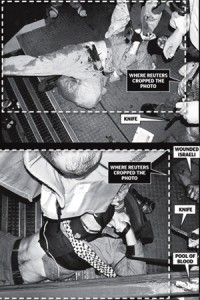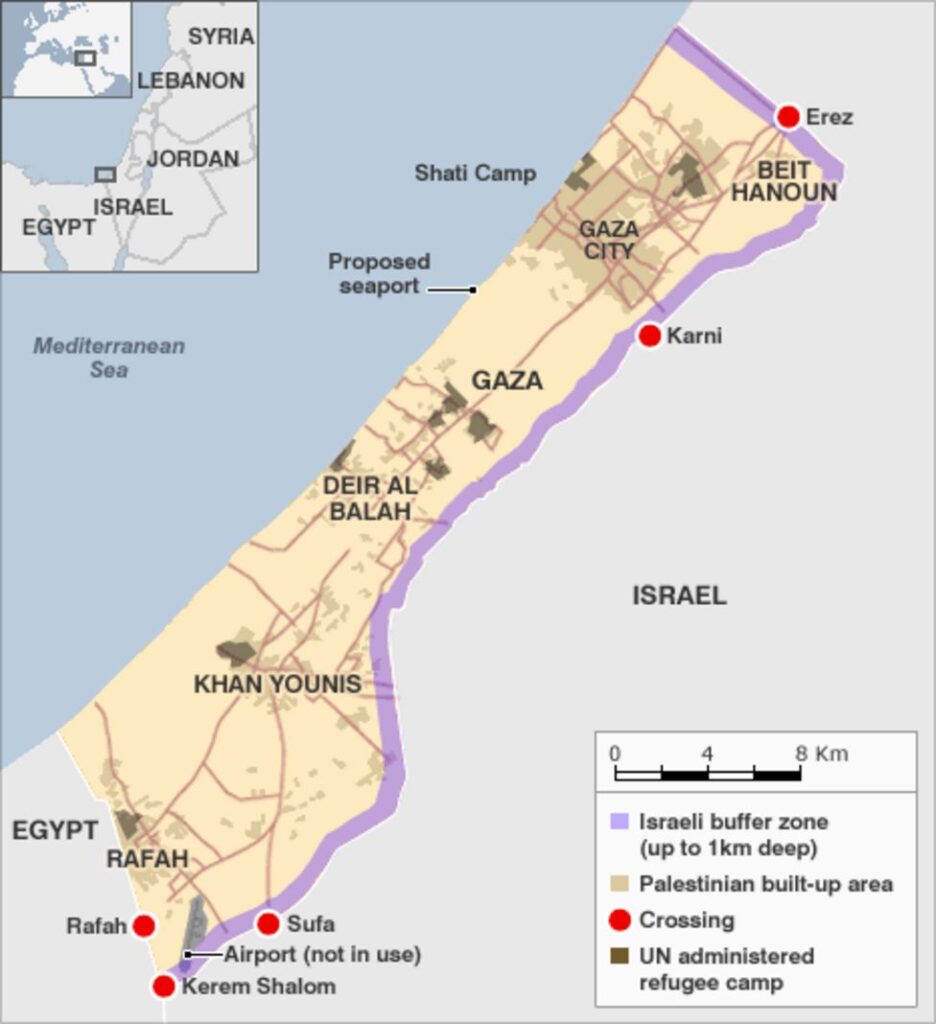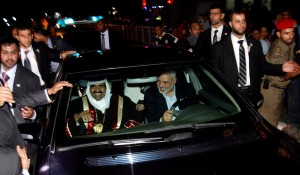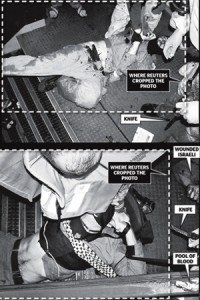Popular Logistics joins Camera (click), YNet (click), Fox (click), and the New York Post (click) accused Reuters of “Fauxtography”, or propaganda by doctoring photos .

Photo of action on Mavi Marmara. Dashed lines shows cropping by Reuters to hide knifes wielded by "Peace" Activist and pools of Israeli blood.
These are photos of the clash between released by IHH documenting it’s clash with Israeli commandos.
In the words of the Post Editorial,
“One photo shows an Israeli surrounded by IHH “peace” activists, one of whom is holding a knife. The second shows another Israeli lying under a bloodstained railing as a second IHH activist also holds a knife. In the photos distributed by Reuters, there were no knives. And no blood.
“The impact being to make it look more like an Israeli massacre of innocent civilians and less like an act of self-defense against armed thugs masquerading as humanitarian workers.
“This isn’t the first time Reuters has been caught in some blatantly anti-Israel photo retouching.
“Back in 2006, during the Israel-Lebanon war, at least two images sent by Reuters over its wire from Beirut were deliberately doctored so as to suggest great damage inflicted by Israel.
“Indeed, it was the very same blogger, Charles Johnson, who uncovered the outrageous exercise in what he called ‘fauxtography.’
“At first, the agency also claimed an innocent mistake, saying the photographer had been trying to remove ‘dust marks.’
“It admitted the photos had been deliberately faked, severed its ties to the photographer, Lebanese freelancer Adnan Hajj, and removed all 920 pictures he’d taken from its server. A senior photo editor also was fired.
“Reuters insists that it’s ‘committed to accurate and impartial reporting.'”



